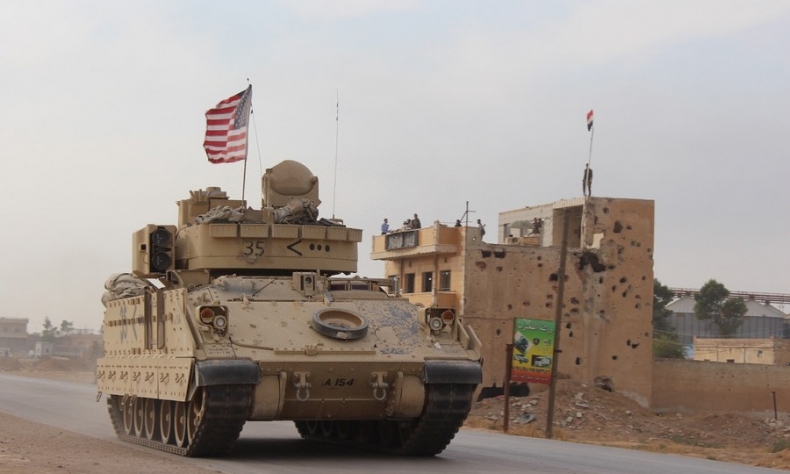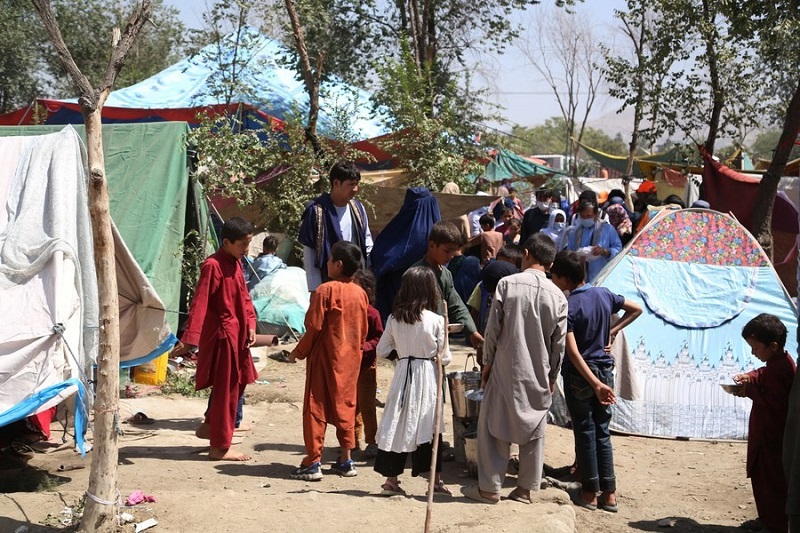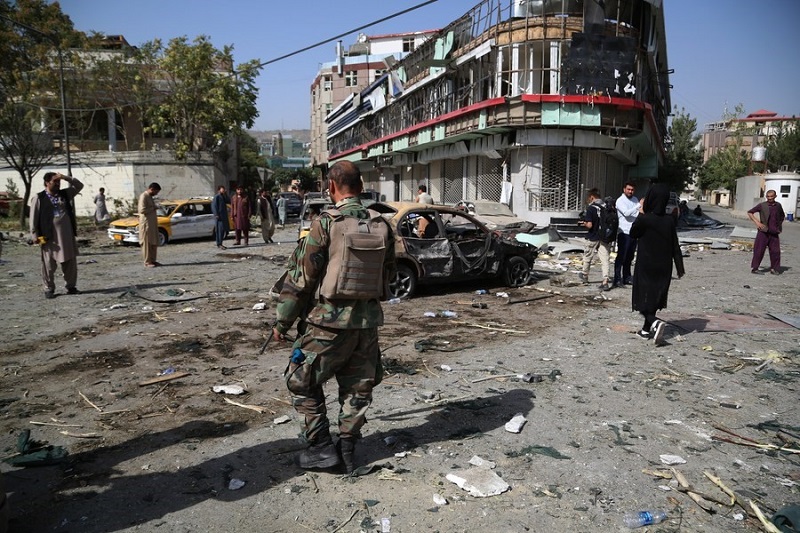The Stark Truth about U.S. Interventions

The U.S. intervenes, frequently and unilaterally, in the name of improvement but in reality, leaves things worse.
In August, coinciding with the first anniversary of the U.S.-led coalition’s chaotic withdrawal from Afghanistan, Chinese national broadcaster China Global Television Network (CGTN) aired a documentary, The Human Toll of U.S. Meddling, while the China Society for Human Rights Studies published a report highlighting serious crimes the U.S. committed violating human rights in the Middle East and beyond. Both reviewed U.S. actions in the Middle East, Afghanistan and the macro-region over the last two decades, analysing a pattern of interventions which, considered by their results, might be defined as supremacism.
Should these reports be dismissed in the West because they are non-Western? Clearly not as they use serious sources and established facts.
Dramatic Statistics
CGNT quotes an extremely well-researched investigation by the Ivy League Brown University (the Costs of War project), which says over 929,000 lives have been lost since Washington launched its “global war on terror” after September 11, 2001. The Costs of War project assesses more than 176,000 people died directly in the war in Afghanistan (2001-2021), which turned out to be the longest intervention by American forces. The toll includes more than 46,000 civilians.
The China Society for Human Rights Studies quotes statistical database Statista, which says from 2003 to 2021, about 209,000 Iraqi civilians died during the Bush, Obama, Trump and Biden administration interventions, and about 9.2 million Iraqis became refugees. In Syria, about 350,000 civilians were killed.
Actually, the human toll estimates are still conservative since figures do not take into account long-term effects. As a side effect of the bombardments, shootings and infrastructure destruction, more than 13 million Syrians have fled their country in the last 11 years. Though unlike in the other conflicts, the U.S. is not the only actor in the Syria crisis, however, its actions in Syria and neighbouring countries have both directly and indirectly contributed to the suffering of the Syrian population significantly.

Among the long-term effects, in Afghanistan nearly 23 million people are experiencing extreme levels of hunger and nearly 9 million are at risk of famine. In early 2016, I visited a major important refugee center in Munich, Germany, several times. Children from Afghanistan, Syria, Iran and neighbouring countries talked of unimaginable sufferings.
The grim scenario does not stop there. According to studies quoted by the two organizations, Iraq’s GDP has never gone back to the level of 1990. Furthermore, with Iraq’s health system devastated, 20,000 Iraqi doctors fled the country. In Syria, living standards before the interventions, comparable to some Western European countries’, have worsened dramatically and now there is also an extreme lack of water.
In the case of Afghanistan, articles in The New York Times say the occupation of the country launched in response to 9/11 cost well over US $2 trillion, not counting the wasted civilian aid, in addition to the human toll. Due to mismanagement and bureaucratic inertia, vast sums of money went into the pockets of various corrupt officials and contractors, both Afghan and American.
Richard Haass, a former American diplomat, says in his book War of Necessity, War of Choice: A Memoir of Two Iraq Wars, that all the U.S. interventions were bad choices. They were as unwarranted as they were poorly conceived and implemented, causing damage, permanent, irretrievable or long-term in both humans and critical infrastructure (including health and environment). Let’s remember that when Washington launched the Iraq War, it used depleted uranium munitions in large quantities, causing enormous damage to the health of the local population and to the local environment.
Some Important Points
Both reports highlight the sheer uselessness of the interventions. The U.S. has intervened in the name of improvement but as a matter of fact, it has improved nothing. Besides the human costs, these interventions have led to dramatic reduction of the countries’ public services, specifically causing lack of water, electricity and medical care, particularly hitting the poor and children.

Second, the military operations were always conducted under the name of human rights or freedom, constructing labels such as “color revolutions” and “Arab spring,” as in Egypt, Yemen, Jordan, Algeria, Syria and Libya.
Third, various American administrations have been systematically using military contractors to exercise repression in the Middle East. These operations often escape accountability for their illegal proceedings or excesses or crimes.
Fourth, the United States is the only “sanctions superpower” in the world today. CGTN reports that according to the U.S. Treasury Department’s 2021 Sanctions Review, the United States had had more than 9,400 sanctions in effect by the 2021 fiscal year. But the sanctions imposed by the interventionist power almost never produce the desired results. However, that does not mean they are not painful for the countries’ populations.
Fifth, both reports argue that the U.S. actions are to maintain America’s military, economic and conceptual hegemony. In the name of human rights, the U.S. is forcefully imposing its own values on other countries, which is not democratic at all, as the underlying zero-sum game mentality tries to maintain dominance.
The cultural dimension of the interventions deserves a special mention, particularly the fact that occupation of Iraq was followed by the looting of its National Museum, without any respect for one of the fundamental civilizations of the world. About 170,000 artifacts at the museum, featuring the essence of the Sumerian and Babylonian and Assyrian civilizations, were plundered or destroyed.
While the U.S. keeps advocating a rules-based international order, the reports say the U.S. often speaks of “exceptionalism” when referring to its own foreign policy. The whole U.S. move is actually “supremacism, which threatens to destabilize the world,” triggering “forced migration, economic migration, cultural migration.”

Internal Contradictions
The report by the China Society for Human Rights Studies has two instances deserving special attention. First, the reference to historian Paul Atwood’s book War and Empire: The American Way of Life. In it the author argues that “war is the American way of life.” Since the founding of the United States, it’s only less than 20 years, during which the country was not involved in a war, making it a true “war empire.” Second, a study in the Smithsonian Institution’s official journal Smithsonian says that since 2001, wars and military operations launched by the United States in the name of “anti-terrorism” covered “about 40 percent of the countries on the planet.”
Also, in 2019, former President Jimmy Carter stated that he considered the United States to be the most warlike nation in the history of mankind “because of its desire to impose American values on other countries.” He also said that since 1979, China has not been involved in any armed confrontation, unlike the United States, which, according to him, wasted about US $3 trillion in wars around the world. Carter pointed out the war spending has been at the expense of domestic infrastructure development.
The U.S. rise in a little more than three centuries is exceptional in the history of mankind. U.S. advancement, prosperity and institutions have been marvelled at by generations worldwide and attracted immigration from all continents. But since several decades, things have been not what they used to be. Decadence is growing in U.S. national politics, which is also clearly projected in Washington’s international relations. I asked four university students about the “American dream.” To my surprise, they claimed not to have ever heard of the concept.
Bloomberg once carried an article entitled “Americans Have More Guns Than Anywhere Else in the World and They Keep Buying More.” In 2016, while on the campaign trail, Donald Trump claimed, “I could stand in the middle of Fifth Avenue and shoot somebody and I wouldn’t lose any voters.” And his statement did not prevent him from becoming the 45th U.S. president!
Now the challenge seems comparable if not bigger. In August 2022, U.S. House Speaker Nancy Pelosi’s provocative visit of China’s Taiwan, plus additional U.S. political and military moves, are fueling a dangerous situation against the backdrop of a crisis in Eastern Europe. Actually win-win cooperation and the concept of a community with a shared future for mankind alone can promise the world hope in the grim international circumstances.
Augusto Soto is Director of Dialogue with China Project.
 Facebook
Facebook
 Twitter
Twitter
 Linkedin
Linkedin
 Google +
Google +










